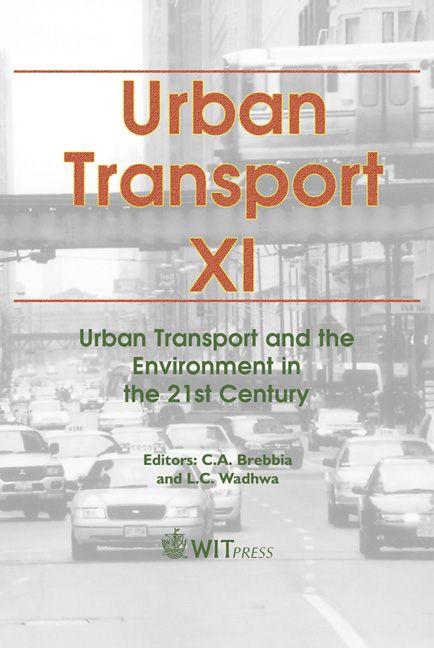Cost Benefit Analysis For Urban Policy Measures Related To Economic Transport
Price
Free (open access)
Transaction
Volume
77
Pages
11
Published
2005
Size
390 kb
Paper DOI
10.2495/UT050861
Copyright
WIT Press
Author(s)
G. Liedtke, D. Schmedding & T. Marouda
Abstract
This paper discusses the application of urban freight transport decision-support tools in cost benefit analyses (CBA). The principles of the CBA are based on the Microeconomic Theory. It is supposed that individuals optimise their benefits and, therefore, a single policy measure can have a certain influence on the whole consumption pattern.When the effects of a policy measure on the situation of companies are assessed in the framework of a CBA, a cost minimising behaviour can be supposed, and adaptations of the individual companies could be \“modelled” by the application of optimisation tools. The difference between the cost situation before and after the realisation of a policy measure could thereby be determined. As an example, the adaptation \“changes in routing behaviour” in the urban goods distribution will be discussed. It is shown that adaptations in the routing can absorb parts of the costs resulting from a lorry ban on certain urban streets. Guidelines for the use of optimisation tools for company behaviour modelling are deduced. Behaviour reactions of economic transport actors and methods for their assessment are analysed. Keywords: cost benefit analysis, company behaviour modelling, city-logistics. 1 Introduction Since its application in the public administration, the Cost-Benefit-Analysis (CBA) became one of the most important methodical tools in western countries for supporting public policy decisions. Based on the theoretical principles of welfare economics, it suggests a simple and clear decision criterion \“Costs versus Benefits” for choosing between public project alternatives. There exist already guidelines for the CBA in many countries indicating standardised costs and benefits.
Keywords
cost benefit analysis, company behaviour modelling, city-logistics.





